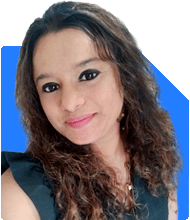Jinal Mehta | Answer |Ask -Follow
Financial Planner - Answered on Jun 24, 2024
She is the founder of Beyond Learning Finance, an authorised education provider for the CFP certification programme in India.
In addition, she manages a family office organisation, where she handles investment planning, tax planning, insurance planning and estate planning.
Jinal has a bachelor's degree in management studies. She also has a diploma in in financial management from NMIMS, Mumbai.
... more

I'm 27 years old and married with 1 daughter (age 1 month) and from last 2 year I'm doing sip on 4 equity MF with 14k ( 5 on small cap, 5 midcap, 3 large cap, 1 flexicap), and holding stocks worth 4 lac, now I'm planning to invest more 5k in large & midcap, midcap 3k and small cap 3k, and quarterly 30k on sovereign gold bonds. My investment time frame is 10 year and I want to retire at 40 age with a corpus of 1.5 cr. Please suggest me if any changes required or not.
You may like to see similar questions and answers below
Ramalingam Kalirajan |10894 Answers |Ask -Follow
Mutual Funds, Financial Planning Expert - Answered on May 19, 2024
Ramalingam Kalirajan |10894 Answers |Ask -Follow
Mutual Funds, Financial Planning Expert - Answered on Jun 25, 2024
Ramalingam Kalirajan |10894 Answers |Ask -Follow
Mutual Funds, Financial Planning Expert - Answered on Jul 16, 2024
Ramalingam Kalirajan |10894 Answers |Ask -Follow
Mutual Funds, Financial Planning Expert - Answered on Jul 17, 2024
Nitin Narkhede |113 Answers |Ask -Follow
MF, PF Expert - Answered on Oct 11, 2024
Mayank Chandel |2576 Answers |Ask -Follow
IIT-JEE, NEET-UG, SAT, CLAT, CA, CS Exam Expert - Answered on Dec 17, 2025
Radheshyam Zanwar |6747 Answers |Ask -Follow
MHT-CET, IIT-JEE, NEET-UG Expert - Answered on Dec 16, 2025
Shalini Singh |181 Answers |Ask -Follow
Dating Coach - Answered on Dec 16, 2025
Patrick Dsouza |1429 Answers |Ask -Follow
CAT, XAT, CMAT, CET Expert - Answered on Dec 16, 2025
Nayagam P P |10858 Answers |Ask -Follow
Career Counsellor - Answered on Dec 16, 2025
Nayagam P P |10858 Answers |Ask -Follow
Career Counsellor - Answered on Dec 16, 2025
Samraat Jadhav |2510 Answers |Ask -Follow
Stock Market Expert - Answered on Dec 16, 2025
Samraat Jadhav |2510 Answers |Ask -Follow
Stock Market Expert - Answered on Dec 16, 2025
Nayagam P P |10858 Answers |Ask -Follow
Career Counsellor - Answered on Dec 16, 2025
Nayagam P P |10858 Answers |Ask -Follow
Career Counsellor - Answered on Dec 16, 2025



























